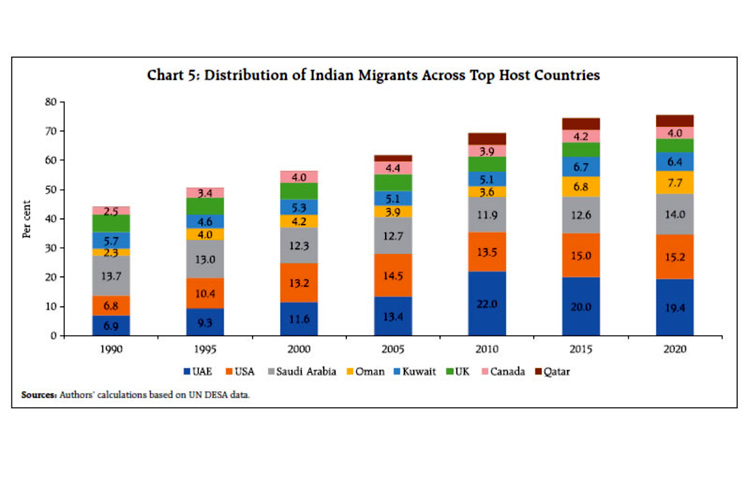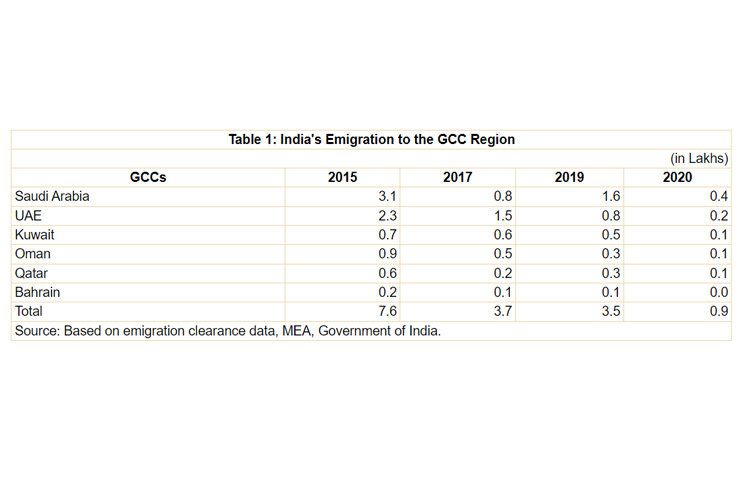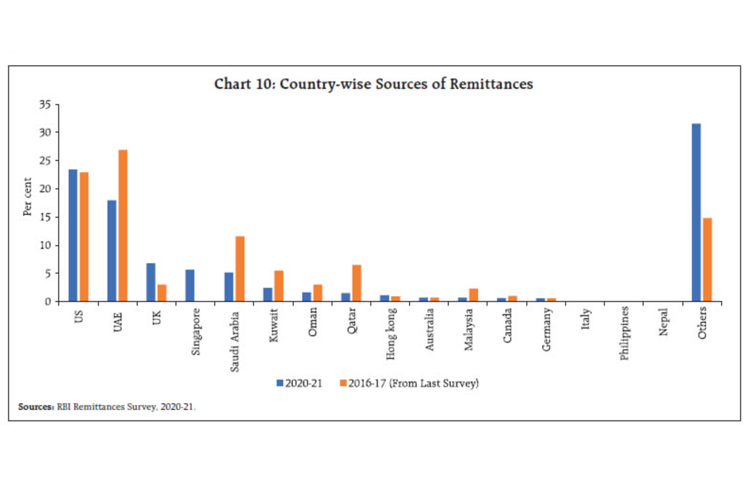- India should stop excessively worrying about impact of India’s foreign policy on remittances from the Gulf. They need quality Indian talent as much as Indians need work opportunities there. Maharashtra has emerged as the top recipient state surpassing Kerala.
Every time the situation in the Gulf flares up (as it does quite often) some foreign affair experts get defensive about our relations with Gulf countries. They speculate and worry about impact of India’s foreign policy on foreign inward remittances and what if the Middle East countries ask Indians working there to leave.
On
two, if Indians are forced to leave the Gulf who will work there because few
locals work and their population cannot meet demand even if they do. On one, an
analysis of foreign remittances numbers state that the Gulf is an important but
no longer the top most contributor of remittances into India.
All
credit to authors, I have only compiled.
Former
High Commissioner to Pakistan G Parthasarathy wrote
in Tribune (August 2022), “While India received total remittances of $87 billion in 2021, the largest receipt of $23 billion came from the US, followed by $18 billion from the UAE. Interestingly, Singapore with remittances of around
$7 billion dwarfed some oil-rich countries like Saudi Arabia, Kuwait and Qatar. India is thus going through a period when its remittances from the US are increasingly dwarfing its remittances from many Gulf countries, most notably from Saudi Arabia.”
Noted
economist Ajit Ranade wrote
in (January 2023) the MINT, “Every year, the
World Bank tracks remittances received by low- and middle-income countries. During
2022, total remittance flow was an estimated $626 billion. Of this, a big chunk
of about $100
billion was received by India. This remittance flow used to be dominated by money sent
by blue-collar workers in Gulf countries. Even in 2022, Qatar, Saudi Arabia and
the UAE make up about 45% of all inflows, with another 10% from Oman and
Kuwait. The US and UK make up another 26%. In Kerala, more than one-fifth of the state’s income is from remittances.”
Also read Remittances
grow 5% in 2022 World Bank
Gender
and Migration Data
Thus, remittances
from the U.S. are on the rise and Middle East falling. It reflects a growing
trend of inflows from workers in the software, technology and financial
services sectors. Also, large number of educated Indians now work in Canada and
Australia.
The
Reserve Bank of India published a paper (July 2022) of India’s inward remittances. Excerpts, “The United Arab Emirates (UAE), the Unites States of America (USA) and Saudi Arabia have been the three major destinations of Indian migrants for the past two decades. Out of the total migrants from India, 48.6 per cent were in the UAE, the USA and Saudi Arabia as at end 2020.”
 Distribution of Indian Migrants across to host countries of Saudi, Qatar etc. Courtesy RBI.
Distribution of Indian Migrants across to host countries of Saudi, Qatar etc. Courtesy RBI.
“As per the survey, the share of remittances from the
GCC region in India’s inward remittances is estimated to have declined from more than 50 per cent in 2016- 17 (last surveyed period) to about 30 per cent in 2020- 21 (Chart
10 and Appendix
Table A5).
 Emigration
to the GCC Region 2015-2020. Courtesy RBI.
Emigration
to the GCC Region 2015-2020. Courtesy RBI. Country wise Sources of Remittances 2020-21 vs 2016-17. Courtesy RBI.
Country wise Sources of Remittances 2020-21 vs 2016-17. Courtesy RBI.
“Amid steady migration of skilled workers, AEs, particularly the US, the UK and Singapore emerged as an important source country of remittances, accounting for 36 per cent of total remittances in 2020-21. The US
surpassed the UAE as the top source country, accounting for 23 per cent of
total remittances in 2020-21. This corroborates with the World Bank
report (2021)3 citing economic recovery in the US as one of the important drivers of India’s remittances growth as it accounts for almost 20 per cent of total remittances.”
“The share of the traditional remittance recipient states of Kerala, Tamil Nadu and Karnataka, which had strong dominance in the GCC region, have almost halved in 2020-21, accounting for only 25 percent of total remittances since 2016-17, while Maharashtra has emerged as the top recipient
state surpassing Kerala.”
“Based on the ‘Fifth Round of the Survey on
Remittances’ for reference period 2020-21, a few major inferences can be drawn. First, evidence on fall in
the remittances from the Gulf region is in line with the global employment
dynamics as Indian diaspora working in informal sectors in the Gulf region
seems to have been impacted the most inter alia due to lockdown restrictions,
and subdued crude oil prices and slower pace of migration in the recent years. Second, stressed income conditions are
discernible from small size transactions gaining share in total remittances
during the pandemic period. Third, notwithstanding sharp decline in remittances to Maharashtra in 2020- 21, it has emerged as the top recipient state along with Delhi apart from the traditional states of Kerala and Tamil Nadu which have witnessed gradual decline in recent years.”
Source of
remittance countries have changed. Let us stop being defensive about Indians
working in the Gulf. These countries need quality Indian talent as much as
Indians need the work opportunities there.
Hope
the Government of India seeks to similarly, reduce its dependence on the Gulf
for crude oil. Diversification of supplies, renewable energy and electrification
of railways hold the key.